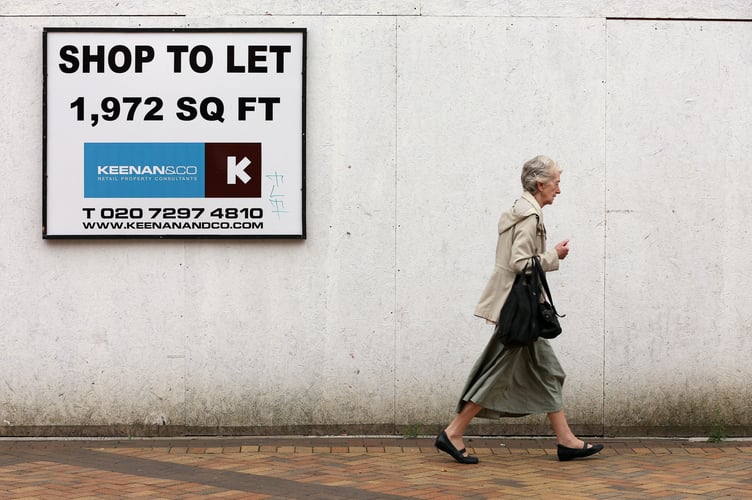Fewer businesses were created in Mid Devon last year, new figures show.
It comes as the UK saw its business birth rate fall to its lowest level since 2010, with the Institute of Directors blaming a poor economic environment and skills shortages.
According to figures from the Office for National Statistics, around 310 new businesses opened in Mid Devon in 2023, down from 315 a year earlier.
Meanwhile, 275 businesses closed in the area last year, down from 320 in 2022.
This means the total number of businesses in Mid Devon increased last year.
Across the UK, the rate of new businesses opening hit its lowest level since 2010, at 11% of all active businesses.
Despite this, the death rate – the proportion of active businesses which closed last year – also fell to 10.8%.
As a result, business openings overtook closures. This was a reversal from 2022, which was the first year in more than a decade when there were more deaths than births.
Anna Leach, chief economist at the Institute of Directors, blamed poor financial conditions after the pandemic, a “relatively weak” growth environment and skill shortages.
“Recent budget decisions unfortunately undermine the UK’s business environment, disincentivising employment and reducing investment through the impact of higher taxes on business costs,” she added.
“Meanwhile, higher public spending is expected to raise the cost of finance in the UK.”
“If the government wants to get higher growth, it’ll need a vibrant business sector to deliver it.”
However, the figures did show an increase in the number of 'high-growth' businesses, those which saw their workforce swell by more than 20% for three years in a row.
There were about 13,750 such businesses nationally in 2023, an increase from 11,480 a year earlier. The South West had 1,205 high-growth businesses, comprising 4.8% of companies in the area.
Pranesh Narayanan, research fellow at the IPPR, welcomed the recovery in the number of high-growth businesses, leading to more jobs in dynamic and growing companies and a stronger economy overall.
However, Mr Narayanan warned they will be competing with larger, established firms.
He urged the Government to ensure the Competition and Markets Authority has the backing it needs to stop larger businesses from “throwing their weight around to stifle competition”.
Looking at individual industries, the transport and storage sector industry had both the highest business birth rate (14.5%) and the highest death rate (21.6%).
At the other end of the scale, finance and insurance saw the lowest proportion of new businesses (6.4%) while the health sector had the best survival rate, with just 6.5% of firms going under.




